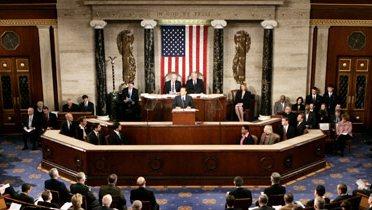Follow @BICampaign2012
Editor’s Note: For Campaign 2012, William Galston wrote a policy brief proposing ideas for the next president on political and institutional reform in America. The following paper is a response to Galston’s piece from Russ Whitehurst. Sarah Binder also prepared a response arguing that significant institutional innovation is unlikely as long as long as the two parties perceive that unified party control is within reach.
William Galston argues that the reform of federal institutions is important to the nation and has been recently neglected by both parties. He points to a history involving constitutional amendments and the creation of major new federal agencies and suggests that neither President Obama nor the candidates for the Republican nomination have proposed anything of similar scope or boldness. He calls for the next president to launch major institutional reforms in the areas of finance, agency consolidation/deconsolidation, and polarization.
It is hard to quarrel with the premise that the health of federal institutions is very important. However, it is not obvious that the president and Republican candidates have actually neglected needed reforms. The fact that President Obama or Republican candidates have not issued proposals for mandatory voting or a change in the rules of the Senate that would allow fast-track confirmations for judicial nominees is evidence of such neglect only if one thinks that these reforms are needed and achievable. If, on the other hand, one favors a major overhaul of the taxation system or restrictions on the regulatory authority of federal agencies or changes in the funding of entitlement programs, there is no dearth of major reform proposals floating about in this political season.
In a real sense, nearly all pieces of federal legislation and every change in administrative procedures instituted through executive authority entail changes in federal institutions. As an example of executive branch reform, the George W. Bush administration called on the Office of Management and Budget (OMB) to begin assessing the functioning of all federal programs through the Program Assessment Rating Tool (PART). Compliance with PART required agency program managers throughout the government to negotiate metrics with OMB by which the success of their program would be evaluated and to collect and report data arising from those metrics. Both OMB and agency program managers invested large amounts of human capital in carrying out PART. Observers differed as to the importance of the variation in program effectiveness that PART was meant to address and the likelihood that PART would result in significant improvements. Some thought it a trivial administrative exercise, whereas others thought it the most ambitious effort to improve the effectiveness of government programs that had ever been implemented.
My point is that the very existence of problems in federal institutions and the extent to which proffered reforms are bold or wise are not givens. Rather, they represent points of view that have to advance through the piecemeal and inherently political process of determining which government programs and processes need fixing and how. Although politicians frequently prefer to avoid the specifics of institutional and policy reform in the context of campaigns, voters know that elections have consequences on just these dimensions of political action. In short, there is no neglect of institutional reform in federal politics.
Education is a case in point. It has not been given much attention in the run-up to the next presidential election. Nor did it receive much consideration in the last cycle. But everyone who cares about education and follows politics knows that the selection of the next president will have significant consequences for the federal role in education and for the federal institutions that implement federal education laws. Those who think that the best chances for educational progress are dependent on wise and assertive federal intervention will likely be able to figure out who they should vote for even without a presidential debate or specific platform positions on this issue. Likewise, those who prefer that education decisions remain largely in the hands of parents (the status quo of the nineteenth century) or that they be determined by local school district monopolies (the status quo of the twentieth century) will be able to figure out if there is a candidate who can reasonably be expected to favor their point of view. Depending on which presidential candidate is elected, the U.S. Department of Education will be a wonderful perch either for a secretary of education who wants to push top-down reforms with regulatory and financial teeth or for someone who is a good manager of block grants and will be satisfied to have a bully pulpit as his or her major instrument for influencing state and local policy and practice.
Many areas of federal government performance are hampered by flawed institutional structures. But what one person sees as a major flaw, another person may see as a strength. In the case of political polarization, Galston views this as a debilitating symptom of many institutional flaws for which he offers reforms, whereas others consider it a desirable reflection of real and important differences in people’s views and interests. If people want a conservative judiciary, they will want to elect a president who will appoint conservatives to the bench. They do not want a set of rules that push the president they have helped elect to pick judicial nominees from lists put forward by bipartisan commissions.
The United States has transitioned from a period in its history in which political elites could represent the center. Now that the Internet and social media allow for the individualization of political expression, the center is just one fuzzy spot on a continuum of political views. The center has no particular claim to primacy (picture a rectangle, not a bell-shaped curve, as the graphic representation of individualized political expression). The very forces that lead to political polarization conspire against attempts to suppress it. If there is a solution, it may reside less in bold institutional reforms that are themselves polarizing than in quiet work on smaller matters.




